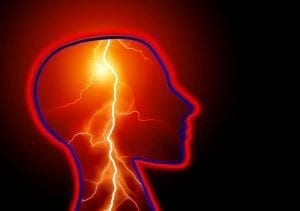Status Epilepticus (SE)
What is status epilepticus (SE)?
A medical emergency, status epilepticus (SE) is considered a rare and potentially fatal condition that occurs when a non-stop seizure lasts five minutes or longer. SE can also occur when a person has more than one seizure during this time without returning to full-consciousness in between seizures. (Many key opinion leaders and epileptologists believe medical intervention should occur after two minutes of non-stop seizure activity.)
Most people who have epilepsy don’t experience SE, and SE tends to affect the elderly and children at a young age. There are approximately 150,000 cases of SE annually in the United States, resulting in nearly 55,000 associated fatalities.
If left untreated, SE can result in serious, permanent brain and bodily damage and can even lead to death.
What are the symptoms of status epilepticus?
Common symptoms of SE include:
- Recurring seizures without returning to full consciousness
- One continuous seizure that lasts longer than 5 minutes
- Loss of consciousness
- Falling
- Clenched jaw
- Uncommon noises (such as grunting)
- Jerking and clinching spasms in the muscles
- Unusual breathing
- Inability to speak
- A “far-off” look and/or staring
- Lack of bladder and/or bowel control
How is status epilepticus diagnosed?
Emergency personnel and doctors will conduct a full examination and will ask questions about a person’s medical history, including potential substance abuse, diet, and medical conditions such as, diabetes, epilepsy, and current medications.
Medical personnel may also conduct diagnostic tests, including:
- CT scan
- MRI
- Blood tests
- Spinal tap
- Electroencephalogram
What is the treatment for status epilepticus?
It is highly likely that a doctor will act swiftly to treat the seizure as soon as possible while also identifying the underlying condition(s) that is causing SE. Some doctors may use the following treatments, or combinations of treatments, such as, but not limited to:
- Glucose (if low blood sugar levels are detected)
- Oxygen
- Lorazepam
- Diazepam
- Phenobarbital
- Valproate
- Fosphenytoin
In addition, the following techniques are helpful to reduce the frequency and severity of SE:
- Following a prescribed treatment plan that may include anti-seizure medications
- Rest, naps, and getting plenty of sleep
- Reducing stress
- Avoiding alcohol
- Closely monitoring blood sugar
- Special diet
It is best to seek the advice of a specialist, such as an epileptologist, who specializes in epilepsy.
Where can I learn more about status epilepticus (SE)?
Status Epilepticus (SE) Articles

Ketamine Earns Orphan Drug Designation for Status Epilepticus


SUDEP Not as Rare as Once Believed, Could Cause 3% of Sudden Childhood Deaths


Injectable XP-0863 for Acute Repetitive Seizures Given Fast Track Designation

A Possible Treatment for CDKL5 Deficiency Disorder has Earned Rare Pediatric Disease Designation
-300x300.png)
Three Drugs Proven Safe for the Treatment of Status Epilepticus




